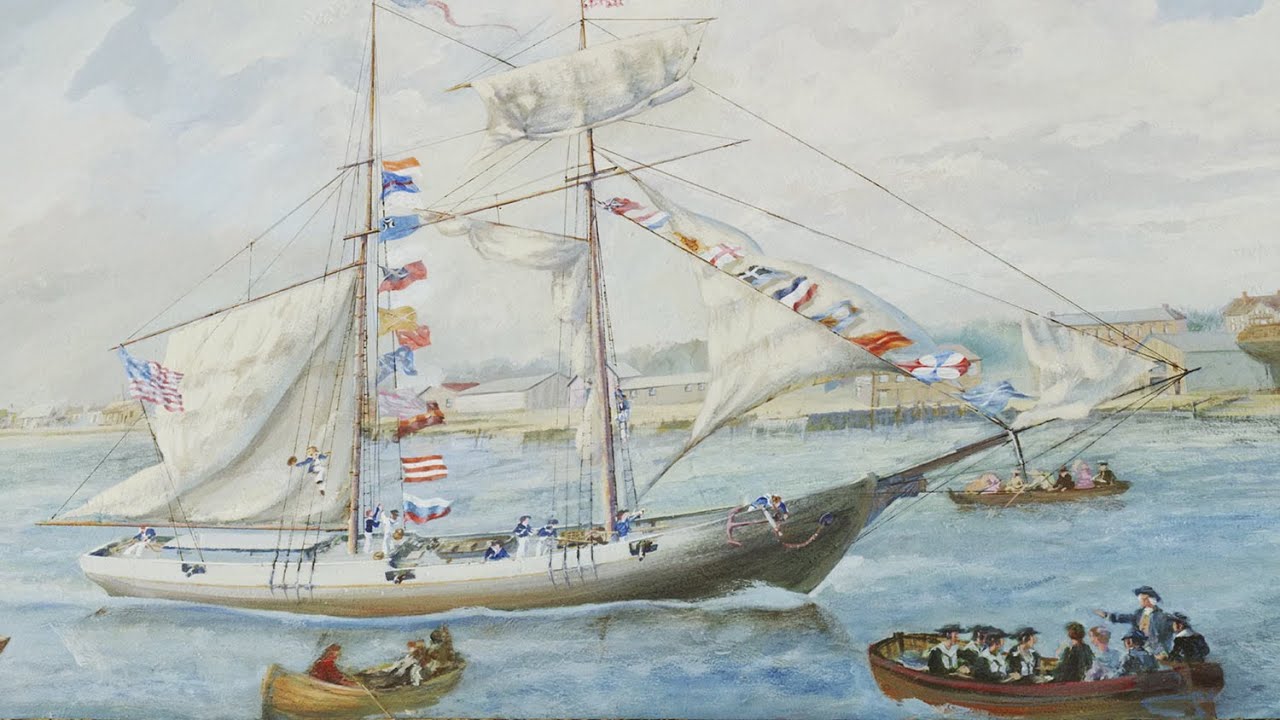Shipbuilding in Newburyport
Newburyport was geographically well-suited to become one of America’s premier early ship building centers. The town’s location along the Merrimack River provided access to the forests of New Hampshire and Maine, where hardwood for ship timbers and straight, tall pine trees for masts and spars, were within easy reach. The abundance of natural resources, combined with a highly-skilled labor force produced the finest ships, known around the world for their quality construction, long lasting durability, and profitability to their owners.
Early ships were built using what were known as skeleton or hawks-nest models, until in 1794 Orlando Merrill, co-owner of the Moggridge and Merrill Shipyard in Newburyport, came up with the brilliantly inventive half-hull model. Composed of slices of wood called “lifts”, each with a thickness representing a given size, lifts could be shaped to the vessel’s form, and then taken apart, with the plans being easily transferred to paper.

Half-hull model and tools
Various makers
c. mid-19th century
CHMM collection
Various makers
c. mid-19th century
CHMM collection
Construction started with laying the keel. The frames were laid out flat on the ground, then raised into position and fastened to the keel. Planking was then installed over the frames. The seams of the wood planks were caulked with oakum [hemp] and pine tar to make the hull watertight, and later ships were sheathed with thin sheets of copper below the water line to prevent harmful marine growth and improve speed. Interior of the ships, hull reinforcing and the lower decks, would be completed and, finally, the main deck, openings, and mast collars would be constructed on top of the frames. Rope, hardware, sails, and provisions would be loaded and rigged, and finally the ship would be launched to much fanfare.
Plan Your Visit
Plan Your Visit
- Museum Hours
Tuesday - Saturday: 10 am - 5 pm
Sunday: 12 pm - 5 pm
Closed Monday
Sunday: 12 pm - 5 pm
Closed Monday
- Tickets
$8 admission for adults
Free for NBPT residents, kids under 12, and museum members
Cost of admission includes access to the Discovery Center.
- Parking
City parking is available adjacent to the museum. View parking lot directions.

250th Anniversary - American Revolutionary War Newburyport
